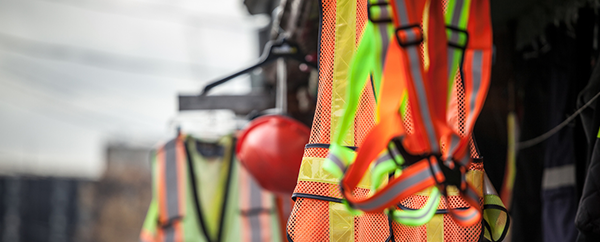Whether your commercial client has a business that’s small, medium or large, as their agent, you’re well aware of many of the risks involved in day-to-day operations. Risks for construction companies and road crews vary greatly from those found at health clinics, which are markedly different from those at a bar, restaurant, convenience store or other retail outlet. That’s where commercial risk management comes in: helping you identify, prioritize, plan for or mitigate potential losses for your specific organization.
Sometimes what we find is that owners of small-to-medium-sized businesses (SMBs) assume they can’t afford risk management. The opposite is actually true: business owners can’t afford not to perform a thorough risk assessment to identify and prioritize their risks, take steps to minimize them, and then consider additional coverage to protect the gap(s).
Related: Disaster emergency plans: How vulnerable is your business?
5 reasons your commercial client needs risk management
“Commercial risk management isn’t just for large entities or those in construction, although those are the types of businesses we think of first,” explained Alonzo Dunn, Core Commercial’s vice president of business development. “All it takes is a distracted person on their phone on your premises – whether they’re an employee, customer or vendor – and you’ve got a risk of a slip-and-fall.”
Getting started can be intimidating: Just making a list of those risks is enough to send your client’s blood pressure skyrocketing. But let’s look at five areas where your commercial clients may need risk management:
1.Employee risks. Risks concerning employees range from losing key leaders and a high turnover rate, to employee liability, theft and fraud. Also included are workplace injuries, lost productivity, workers’ compensation claims and health care costs.
2. Property risks. These include not only a physical location, but even signage out front, inventory and equipment as discussed below.
3. Technology and equipment risks. Cyber risks are increasing, and companies should be on alert. You can read our earlier post on cyber threats here. But technology and equipment risks also include equipment breakdown and replacement, data breaches, downtime from broken equipment or outdated systems, fraud and equipment theft. If your client’s business includes commercial vehicles, a vehicle in the shop or otherwise out of commission may cause their business some loss.
4. Environmental risks (including weather-related). These can range from changes to local, state and federal laws, to weather and natural disasters. Also included here would be risks to growth, whether they’re changes in your client’s community or competition, supply chain issues or even the rise in gasoline prices, if their business includes delivery or service vehicles.
5. Customer (and vendor) risks. An accident onsite involving a customer or vendor. One of their vehicles involved in an auto accident. An irate customer causing workplace violence. Product recalls. All of these are rolled up under customer risks.
Related: How to reduce your business risk exposures by planning ahead
Once you’ve helped your client create a list, next to each, note the likelihood of the risk occurring (high, medium, low) and also the impact the occurrence will have (again, high, medium and low). They’ll want to tackle first those ranked high/high (those that have a high likelihood of occurring plus will have a significant cost), proceeding down the rankings of urgency.
The next step in commercial risk management is to jot down beside each risk what steps they’ve already taken to mitigate the occurrence, and then what activities they need to take (again, ranking by priority). As their insurance agent, you can help with these steps. Core Commercial offers a free comprehensive library of loss control resources through Safetysource.
Related: Minimizing small business liability risks
5 simple ways commercial risk management can help
“Regardless of a company’s size, there are key areas where they can minimize risks, often just by improving workplace safety,” Dunn explained. Read more on reducing on-the-job injuries and workplace safety and slips, trips and falls.
1. Keep a clean and clutter-free workplace. Outside, repair cracked sidewalks and clearly mark steps or changes in elevation. Pay particular attention to all entryways. Ensure walking paths inside are free of clutter and trip hazards such as loose or buckling carpet or flooring. Display prominent signage in areas of high traffic, dangerous equipment, elevation changes or other hazards.
2. Provide the right equipment and safety equipment. Maintaining safe machinery and equipment is essential, as is keeping on hand the right safety equipment for the job.
3. Staff properly. Not only should new hires be oriented to and trained in the tasks and equipment involved in their roles, but businesses should also have sufficient staff to achieve their goals, avoiding excessive overtime, overexertion and exhaustion. Employee fatigue is often a significant contributor to incidents.
4. Train, train again. We’ve talked before about safety training and the importance of having a written safety plan. Every new hire should be trained; regular safety training should be part of your tribal company’s DNA.
5. Discuss risks. Encourage your clients to schedule regular meetings with their managers to discuss risks. Their supervisors and workers are an excellent source to recognize safety issues and suggest improvements in their everyday work world.
Sources:
Risk Management for a Small Business – Small Business Administration
Four Reasons Your Small Business Needs Risk Management

